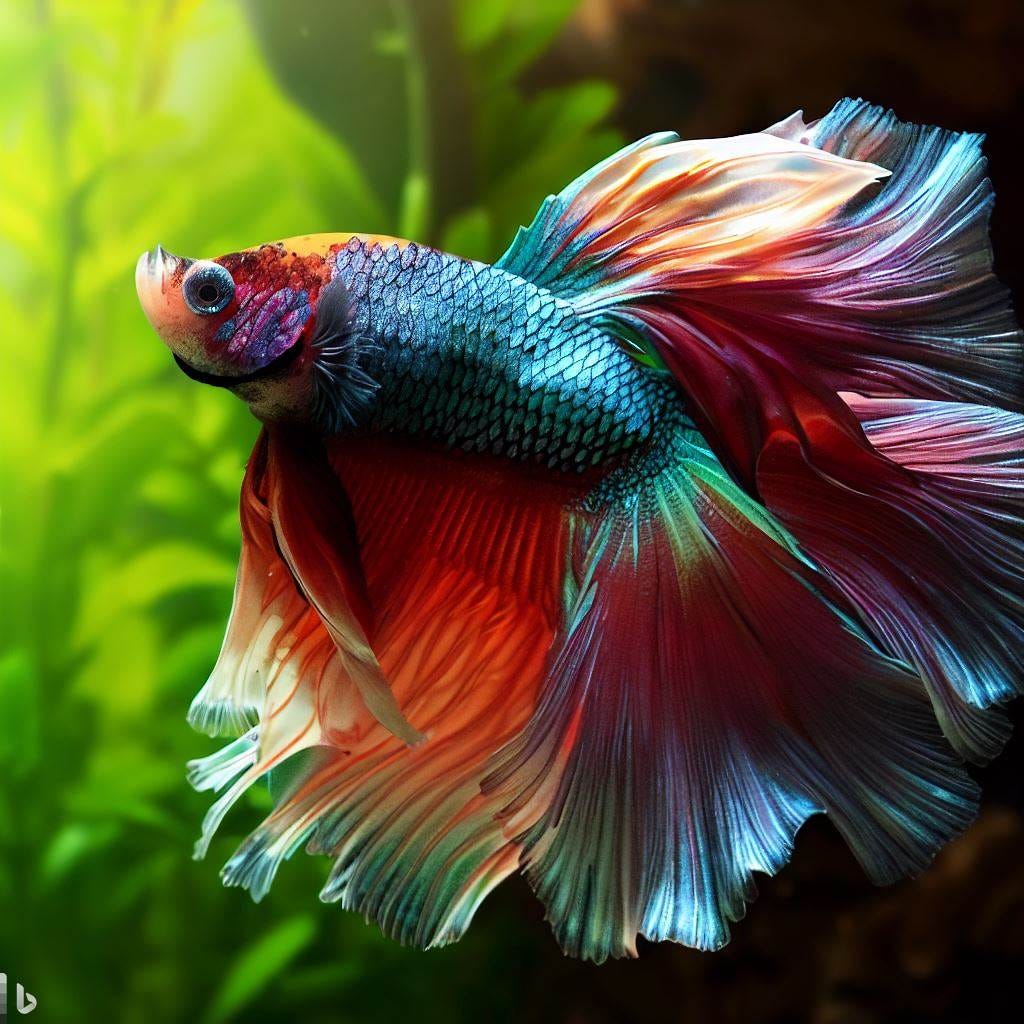Just how to Develop the Perfect Betta Fish Environment at Home
Just how to Develop the Perfect Betta Fish Environment at Home
Blog Article
All About Betta Fish: Recognizing Their Special Needs, Actions, and the very best Practices for Optimum Care
Recognizing the distinct demands and actions of Betta fish is important for any aquarist looking to supply optimum treatment. betta fish. As we explore these elements better, the implications for both newbie and seasoned fish keepers end up being increasingly apparent, increasing inquiries about how ideal to suit these impressive fish in our homes.
Betta Fish Summary
Although commonly admired for their vivid shades and flowing fins, Betta fish, scientifically referred to as Betta splendens, are intricate animals that need particular care to grow. Stemming from Southeast Asia, these freshwater fish are known for their territorial nature and distinct actions. Betta fish exhibit sexual dimorphism, with males displaying much more vivid shades and longer fins than females.
Their aggressive propensities, especially among males, require cautious factor to consider when real estate them. Bettas are commonly maintained in single-specimen tanks to prevent territorial disputes. They can coexist in harmony with certain suitable species in larger area storage tanks, provided the environment satisfies their requirements.

To ensure ideal care, aquarists must recognize their unique behavior attributes, nutritional needs, and habitat demands. betta fish. With proper interest, Betta fish can exhibit their dynamic characters and grow in a well-kept aquarium setting
Natural Environment and Environment
Betta fish grow in a diverse range of natural environments, largely discovered in the superficial waters of Southeast Asia, consisting of rice paddies, swamps, and slow-moving streams. These atmospheres are characterized by cozy temperatures, usually between 75 ° F and 82 ° F(24 ° C and 28 ° C ), and a pH degree ranging from 6.5 to 7.5, which is suitable for their health and wellness.
In their natural environments, Betta fish are accustomed to thick greenery, giving both sanctuary and reproducing grounds. The visibility of plants such as floating water lilies and thick grasses not only offers defense from killers yet additionally adds to the oxygenation of the water, which is necessary for their breathing demands. Additionally, these atmospheres typically have areas of still water, allowing Betta fish to show their natural habits such as bubble nesting.
Recognizing the natural environment of Betta fish is critical for aquarium fanatics. Duplicating these problems-- with water temperature, pH balance, and the addition of online plants-- can significantly boost the general wellness and durability of these fascinating fish, guaranteeing they prosper in a home fish tank setup.
Social Behavior and Interactions
Recognizing the social actions and interactions of Betta fish is essential for effective fish tank monitoring. Betta fish, or Siamese battling fish, are recognized for their one-of-a-kind behavior characteristics, defined largely by territoriality and aggression.
On the other hand, women Bettas display less aggressive behavior and can coexist in groups, called sororities, if introduced effectively. It is critical to monitor their interactions closely, as pecking order and dominance can lead to disputes. Comprehending the characteristics within a Betta community is crucial; developing concealing areas and making sure adequate area can alleviate aggression.
In addition, Betta fish might additionally display interest and social habits towards various other varieties. While they can coexist with certain non-aggressive container mates, it is important to pick suitable types to prevent anxiety and hostility. In general, acknowledging these social communications is key to cultivating a harmonious fish tank setting for Betta fish.
Necessary Treatment Guidelines
Supplying proper treatment for Betta fish is vital to their wellness and wellness. Routine water adjustments-- around 25% regular-- assistance maintain water top quality.
Betta fish call for an appropriate storage tank dimension; a minimum of 5 gallons is suggested to supply appropriate space for swimming and hiding. Include designs and plants to create a stimulating atmosphere, yet stay clear visit this site right here of sharp objects that can damage their delicate fins.

Lastly, ensure the tank is furnished with a filter to maintain the water tidy, however use a mild filter to prevent strong currents that can emphasize the fish. By complying with these necessary treatment standards, proprietors can promote a healthy and balanced and vivid Betta fish.
Common Health And Wellness Issues and Solutions
In the treatment of Betta fish, awareness of usual wellness problems is important for maintaining their well-being. One widespread problem is fin rot, commonly triggered by inadequate water high quality or bacterial infection. Signs consist of frayed or tarnished fins. To deal with fin rot, enhance water conditions and think about utilizing a broad-spectrum antibiotic.
Another common disorder is ich, a parasitic infection characterized by white areas on the fish's body (betta fish). Treatment entails raising water temperature level and including fish tank salt to the tank, as this can help get rid of the parasite
Swim bladder condition is additionally often observed, resulting in buoyancy issues. This problem might emerge from overfeeding or irregular bowel movements. A fasting duration of 24-48 hours, followed by a diet plan of blanched peas, can give relief.
Last but not least, bettas might experience velvet disease, suggested by a gold dust-like appearance on their skin. Treatment usually needs medication specifically created for exterior bloodsuckers, alongside improved storage tank health.
Regular tracking of water criteria, maintaining a get more tidy environment, and providing a balanced diet plan are important safety nets. By attending to these health concerns immediately, Betta fish can lead healthier, a lot more lively lives.
Conclusion
In summary, effective betta fish treatment calls for an understanding of their one-of-a-kind requirements and habits. Normal tracking of wellness and water top quality, Discover More along with a well balanced diet plan, contributes to the durability and vibrancy of betta fish.
Report this page